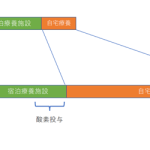【ミニレビュー】
知っていますか?
Staphylococcus lugdunensisという菌
皆さんは、Staphylococcus lugdunensis(S. lugdunensis)という菌名を聞いたことがありますか? 自分はこの「ラグド」もしくは「ルグドゥ」と聞いたときに、どこかのRPGなどに出てきそうな名前だなと思いましたが、ブドウ球菌だけれど黄色ブドウ球菌(S. aureus)のような、しかしコアグラーゼ陰性ブドウ球菌(Coagulase-Negative Staphylococci; CNS)であるというユニークな菌です。今回は、この菌について少しお話ししたいと思います。
はじめに
S. lugdunensisはCNSの一菌種で、1988年にフランスのリヨンにあるブドウ球菌のNational reference centerに集められた検体から初めて分離されました。リヨンのラテン語名がLugdunumであることから、S. lugdunensisと名付けられました[1]。普段は皮膚などに常在しているとされ、30%以上の入院患者の皮膚にいたという報告[2]や、鼠径・腋窩・鼻腔に約10~30%保菌しているという報告もあります[3]。
比較的新しく分離された菌であることや、必ずしもすべての施設で他のCNSと分けて同定していないこともあり、検出頻度のデータは乏しいのですが、臨床検体から分離されたCNSのうち約3%がS. lugdunensisであったという報告や[4]、欧米では血流感染症の約0.3%がこの菌を原因としていたという報告[5]もあります。
日本国内ではどうでしょうか。CNSの1.3~5.2%がS. lugdunensisであったとの報告もありますが[6-8]、果たしてこれらがどのくらいの頻度で感染症を起こしているのかは不明でした。海の向こうの話として、「国内では悪さしていないんじゃない?」「臨床現場ではみないよ」なんていわれることもありました。そこで、国内複数の施設で、きちんと全症例を対象に、感染症科医が感染症かどうかを判定しながら血液培養の結果を前向きに検討したデータベースで筆者が調べたところ、なんと菌血症と判定されたケースの0.28%がS.lugdunensisを原因としていました[9]。前述の諸外国と同等に、日本でも感染症を起こしているわけです。
S. lugdunensisが培養で検出されたら
培養でS. lugdunensisが検出された場合、他のCNSと異なりコンタミネーションの可能性は比較的低いとされています。培養検査にて検出されたS. lugdunensisの臨床例で、コンタミネーションと考えられたものは15%程度しかなかったとの報告もあります[10]。血液培養1セットのみの陽性のケースではコンタミネーションと判断されたものが55%のみであり、45%は真の菌血症との報告もあります[11]。CNSは通常、臨床的背景にもよりますが、血液培養で1セットのみの陽性であった場合のコンタミネーション率は比較的高いとされているものの[12]、S. lugdunensisは他のCNSよりもコンタミネーション率が低いので、S. lugdunensisが培養で検出された場合、特に無菌検体ではコンタミネーションではなく起因菌の可能性を考える必要があります。
微生物学的特徴
S. lugdunensisはグラム陽性の球菌ですが、同定がCNSというまでで以降の詳細な菌名(種)まで至らなければ、そのままCNSとして見逃される可能性があります。施設の状況や臨床状況にもよるとは思いますが、少なくとも血液や髄液などの無菌検体および明らかな感染症を生じている局所からの検体(例えば皮膚軟部組織感染症での膿など)では、同定がCNSまでで止まっていないかどうか、その先の同定が可能かどうかなど、検査室とコミュニケーションを取ったほうがよいと考えます。また、培地上でのコロニーがS. aureusに似ていることがあり、加えてクランピングファクター陽性のため、コアグラーゼ試験のうちスライド凝集試験やラテックス凝集法など一部の検査ではS. lugdunensisも偽陽性となることがあります[13]。このため、まれにS. aureusと間違えられる可能性もあり、一部の同定方法では注意が必要です。
S. lugdunensis自体の病原因子としても、S. aureusが産生する溶血毒素と同じ毒素産生がいわれており[14]、さらに粘着因子の問題やバイオフィルムの成分でも他のCNSと異なることなどが指摘されています[15]。また、感受性の基準も他のCNSと異なり、S. aureusと同じブレイクポイントになることに要注意です[16]。
主な感染症
皮膚軟部組織感染症から菌血症、感染性心内膜炎(infective endocarditis; IE)[17]、人工物感染[18]まで様々な報告があります。S. lugdunensisは市中感染症でIEを認める報告が多い一方で、医療関連ではIEを伴わない菌血症の傾向も報告されています[19]。この場合、院内での発症が多く、菌血症のフォーカスの70~90%以上は中心静脈カテーテルなどであったと報告されており、血管内デバイスと関連性が強いと考えられています[20]。国内の多施設研究でも医療関連が多く、カテーテル関連血流感染症が57.1%と最多でした[9]。一方で、IE例については市中発症例が多く、予後も不良とされています。他のCNSと異なり、人工弁ではなく自然弁のIEが多く、自然弁でCNSによりIEになった例の44%がS. lugdunensisを原因としていたという報告もあります[1]。S. lugdunensisによる心内膜炎の致死率は、自然弁で42%、人工弁で78%であり、いずれにせよ非常に高いと報告されています[21]。
薬剤感受性
薬剤感受性については、他のCNS比べるとOxacillin感受性であることが多いとされていますが、近年では米国から45%がOxacillin耐性との報告[22]があり、国内の小児病院でも55%が耐性であったとの報告があります[23]。学会報告のみですが、別の後ろ向き単施設研究でもOxacillin感受性は57.1%のみであり、多変量解析では90日以内の死亡と相関する因子は「OxacillinのMICが2以上」であったとする報告もあります[24]。
今後の可能性
ここまで読むと、とても恐ろしい菌のようにも思えますが、2016年にNatureで発表された論文では、S. lugdunensisがlugduninというチアゾリジン含有環状ペプチド抗菌薬を産生していると報告されました[25]。MRSAの増殖を抑制し、耐性誘導も確認されなかったとのことです。もちろん、これが今後実用的な抗菌薬となっていくかどうかはまだ研究段階のため不明ですが、菌同士もこういった成分を産生しながらお互いに縄張り争いをしているのかなと想像します。こういった発見が、将来につながっていくことを祈っております。
【References】
1)Frank KL, Del Pozo JL, Patel R: From clinical microbiology to infection pathogenesis: how daring to be different works for Staphylococcus lugdunensis. Clin Microbiol Rev. 2008 Jan; 21(1): 111-33.
2)Ho PL, Leung SM, Chow KH, et al: Carriage niches and molecular epidemiology of Staphylococcus lugdunensis and methicillin-resistant S. lugdunensis among patients undergoing long-term renal replacement therapy. Diagn Microbiol Infect Dis. 2015 Feb; 81(2): 141-4.
3)van der Mee-Marquet N, Achard A, Mereghetti L, et al: Staphylococcus lugdunensis infections: high frequency of inguinal area carriage. J Clin Microbiol. 2003 Apr; 41(4): 1404-9.
4)Gatermann SG, Koschinski T, Friedrich S: Distribution and expression of macrolide resistance genes in coagulase-negative staphylococci. Clin Microbiol Infect. 2007 Aug; 13(8): 777-81.
5)Pfaller MA, Jones RN, Doern GV, et al: Survey of blood stream infections attributable to gram-positive cocci: frequency of occurrence and antimicrobial susceptibility of isolates collected in 1997 in the United States, Canada, and Latin America from the SENTRY Antimicrobial Surveillance Program. SENTRY Participants Group. Diagn Microbiol Infect Dis. 1999 Apr; 33(4): 283-97.
6)Kawamura Y, Hou XG, Sultana F, et al: Distribution of Staphylococcus species among human clinical specimens and emended description of Staphylococcus caprae. J Clin Microbiol. 1998 Jul; 36(7): 2038-42.
7)Higaki S, Kitagawa T, Morohashi M, et al: Distribution and antimicrobial susceptibility of coagulase-negative staphylococci from skin lesions. J Int Med Res. 1999 Jul-Aug; 27(4): 191-5.
8)Akiyama H, Kanzaki H, Tada J, et al: Coagulase-negative staphylococci isolated from various skin lesions. J Dermatol. 1998 Sep; 25(9): 563-8.
9)Ainoda Y, Takeshita N, Hase R, et al: Multicenter Study of the Clinical Presentation of Staphylococcus lugdunensis Bacteremia in Japan. Jpn J Infect Dis. 2017 Jul 24; 70(4): 405-7.
10)Herchline TE, Ayers LW: Occurrence of Staphylococcus lugdunensis in consecutive clinical cultures and relationship of isolation to infection. J Clin Microbiol. 1991 Mar; 29(3): 419-21.
11)Fadel HJ, Patel R, Vetter EA, et al: Clinical significance of a single Staphylococcus lugdunensis-positive blood culture. J Clin Microbiol. 2011 Apr; 49(4): 1697-9.
12)Weinstein MP, Towns ML, Quartey SM, et al: The clinical significance of positive blood cultures in the 1990s: a prospective comprehensive evaluation of the microbiology, epidemiology, and outcome of bacteremia and fungemia in adults. Clin Infect Dis. 1997 Apr; 24(4): 584-602.
13)三澤慶樹, 吉田敦, 奥住捷子: コアグラーゼ試験およびラテックス凝集反応: Staphylococcus属の鑑別におけるピットフォール. 日本臨床微生物学雑誌. 2015; 25(1): 19-25.
14)Argemi X, Hansmann Y, Riegel P, et al: Is Staphylococcus lugdunensis Significant in Clinical Samples? J Clin Microbiol. 2017 Nov; 55(11): 3167-74.
15)Frank KL, Patel R: Poly-N-acetylglucosamine is not a major component of the extracellular matrix in biofilms formed by icaADBC-positive Staphylococcus lugdunensis isolates. Infect Immun. 2007 Oct; 75(10): 4728-42.
16)CLSI M100-ED29: 2019 Performance Standards for Antimicrobial Susceptibility Testing, 29th edition.
http://em100.edaptivedocs.net/dashboard.aspx
17)Tsao YT, Wang WJ, Lee SW, et al: Characterization of Staphylococcus lugdunensis endocarditis in patients with cardiac implantable electronic devices. Int J Infect Dis. 2012 Jun; 16(6): e464-7.
18)Lourtet-Hascoët J, Bicart-See A, Félicé MP, et al: Staphylococcus lugdunensis, a serious pathogen in periprosthetic joint infections: comparison to Staphylococcus aureus and Staphylococcus epidermidis. Int J Infect Dis. 2016 Oct; 51: 56-61.
19)Zinkernagel AS, Zinkernagel MS, Elzi MV, et al: Significance of Staphylococcus lugdunensis bacteremia: report of 28 cases and review of the literature. Infection. 2008 Aug; 36(4): 314-21.
20)Ebright JR, Penugonda N, Brown W: Clinical experience with Staphylococcus lugdunensis bacteremia: a retrospective analysis. Diagn Microbiol Infect Dis. 2004 Jan; 48(1): 17-21.
21)Anguera I, Del Río A, Miró JM, et al: Staphylococcus lugdunensis infective endocarditis: description of 10 cases and analysis of native valve, prosthetic valve, and pacemaker lead endocarditis clinical profiles. Heart. 2005 Feb; 91(2): e10.
22)Kleiner E, et al : Clinical significance of Staphylo- coccus lugdunensis isolated routine cultures. Clin Infect Dis 2010; 51: 801-803.
23)桜井博毅, 堀越裕歩: 小児のStaphylococcus lugdunensisによる市中感染症と院内感染症の臨床像と細菌学的検討. 小児感染免疫. 2019; 31(1): 21-6.
24)Ainoda Y, Asahata S, Fujita T, et al: Factors associated with 90-day mortality in patients with Staphylococcus lugdunensis bacteraemia in Japan: A case-control. 24rd European Congress of Clinical Microbiology and Infectious Diseases (ECCMID), p.1782.
25)Zipperer A, Konnerth MC, Laux C, et al: Human commensals producing a novel antibiotic impair pathogen colonization. Nature. 2016 Jul 28; 535(7613): 511-6.








